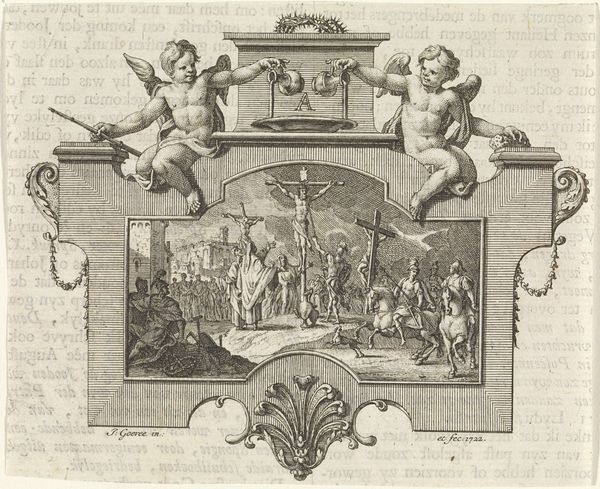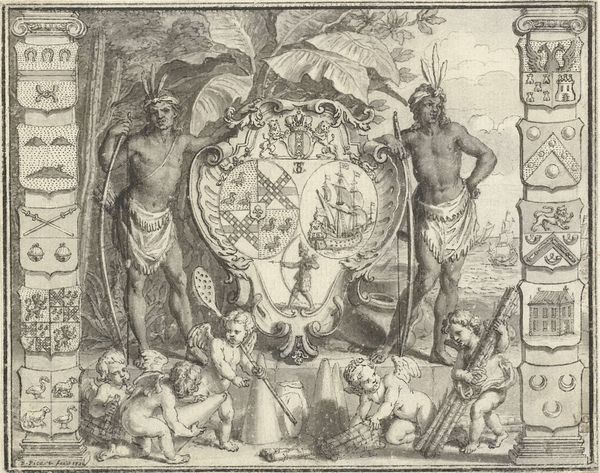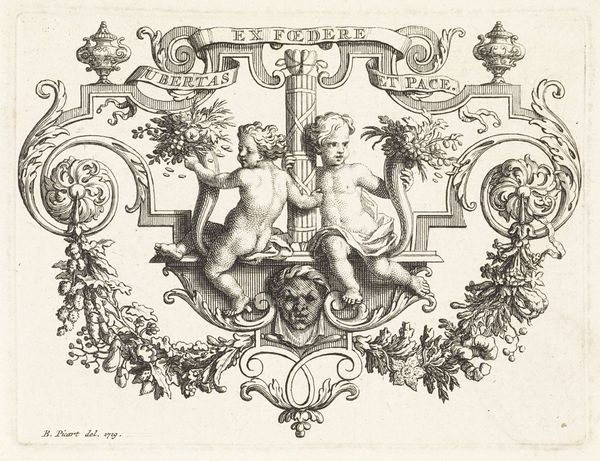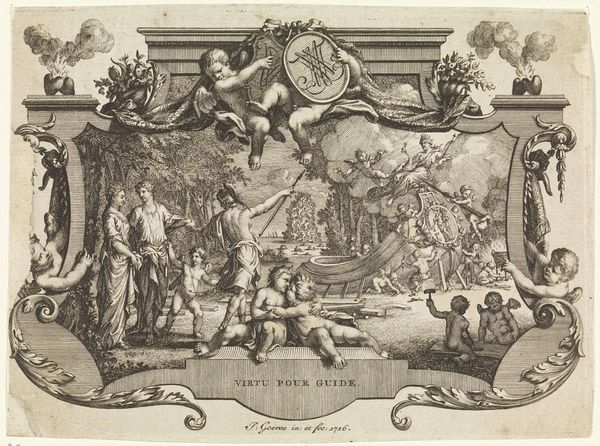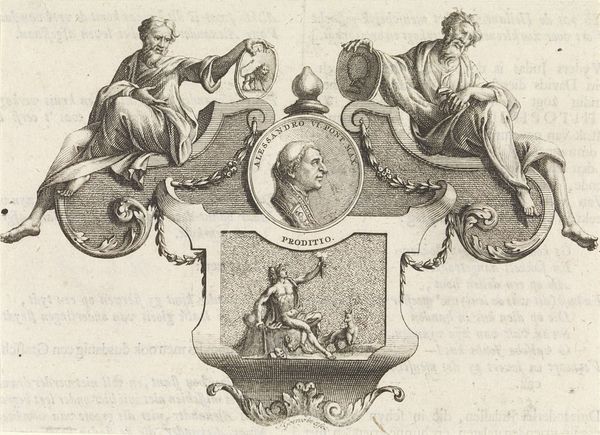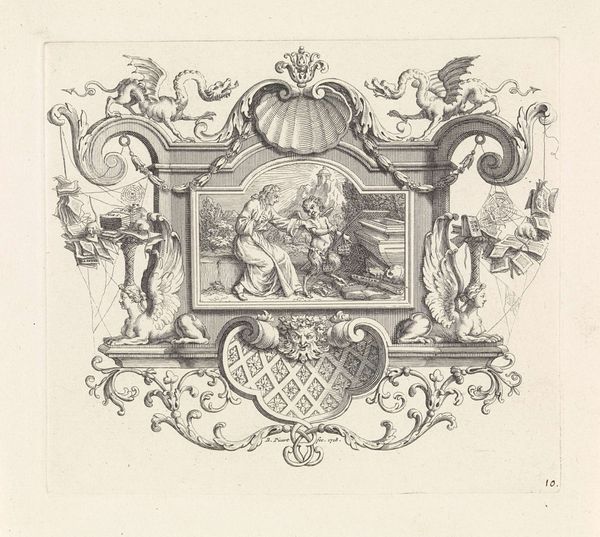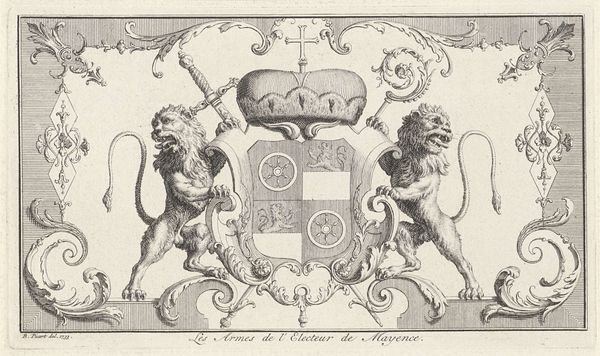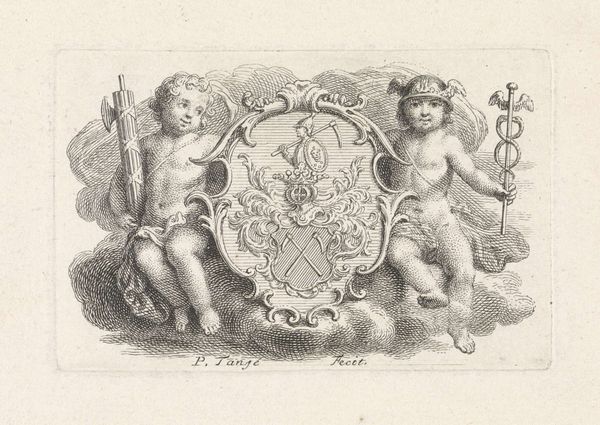
print, engraving
#
baroque
# print
#
old engraving style
#
decorative-art
#
engraving
Dimensions: height 74 mm, width 115 mm
Copyright: Rijks Museum: Open Domain
Editor: Here we have Jacob Folkema's "Wapenschild geflankeerd door putti," an engraving dating from 1723-1767. The detail achieved through the engraving technique is remarkable, almost tactile. What significance do you see in this specific choice of printmaking? Curator: Well, considering this was likely a mass-produced item, possibly intended to commemorate a family or event, the engraving medium becomes really interesting. It allows for relatively easy reproduction, embedding the depicted family into a wider material and social network. It wasn't about individual artistry as much as creating a standardized object for consumption. Editor: So, the choice of engraving shifts the focus from artistic expression to broader social and economic contexts? Curator: Precisely! Think about the labour involved: the engraver meticulously translating an image onto a plate, the printing process itself, and the distribution. These prints democratized access to heraldry, previously only held by the very wealthiest, albeit on a very small scale. How might the relatively accessible materiality of this print impacted public perception of nobility? Editor: That's fascinating. It reframes how we view "art" – not as an exclusive object, but as a product of labor and a tool for social positioning. Curator: Exactly. And by examining the material reality of its creation, distribution, and consumption, we can gain a richer understanding of the era's values and the ever-evolving relationship between art, labour, and class. It helps to reveal the means of production behind these symbolic items. Editor: I’ve certainly learned to look at engravings through a new lens, valuing not just the imagery, but the entire material ecosystem that supports it.
Comments
No comments
Be the first to comment and join the conversation on the ultimate creative platform.
